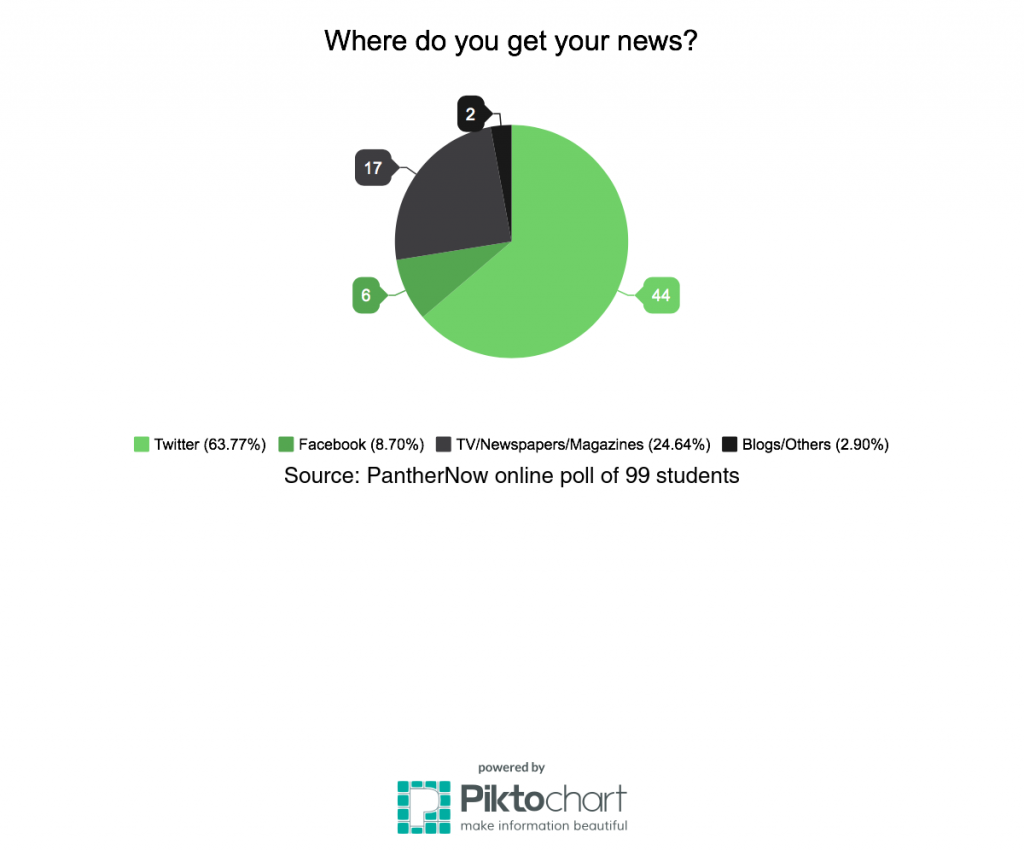Ceylin Arias/Staff Writer
With greater access to social media platforms and journalist pieces available online, the process of sharing journalism has changed, according to an FIU professor.
News organizations are no longer seeing direct traffic to their websites, but through social media clicks, Susan Jacobson, an assistant professor in the School of Communication + Journalism who specializes in how social media shapes the relationship between journalists and news audiences, said to Panther Magazine.
Blogs and social media, she said, are part of what has changed the way readers gain access to information and exercise their freedom of speech online.
“Blogging has popularized the concept that anybody can be a journalist. Suddenly, there are a lot more people expressing their opinions. It’s their ability to have a following to their writing that helps put them in the journalism category,” said Jacobson.
Good bloggers know how to use social media to build their audience, but bloggers are not the only ones. All journalists now use social media to disseminate their product. Thus, according to Jacobson, social media is about audience building.
Jacobson advises, however, to not trust blogs. Instead, readers should take into consideration the news outlets that support such blogs and see how long they have been around and to investigate the author’s expertise on the subject.

Graphic by Nicole Malanga/PantherNOW
“Many news organizations find they get more traffic from Facebook then from a Google search,” said Jacobson. “Social media has eclipsed that [google searches on any topic or issue]. Now, these new organizations are paying more attention to how they share and make available their material on social media sites.”
According to Jacobson, news organizations ensure that their reporters and their news organization themselves are available on social media and build a strong following from their readers.
Reporters also take into consideration the type of readers they have, publishing the most interesting topics on their feed, talking about issues they think will gain an audience or publishing a direct link of an article they think specific subgroups will be interested in.
For Christine Alvarez, a freshman majoring in English, her main news source is Twitter.
“When it comes to accessing informative and trustworthy news, Twitter provides that newsfeed that actually starts a debate about a provocative issue. It’s not solely about sharing photos, in fact it’s not even about that. It’s a resource that generates sometimes meaningful and insightful conversation,” she said.
News organizations rely on readers sharing articles on their feeds and then their friends sharing that same article on their own feed and so forth, according to Jacobson.
Senior and biology major Julissa Reyes agrees that Twitter seems to provide the most news and considers it a trustworthy-based news outlet out of any current social media.
“It’s about reading what trustworthy sources have to say about a large range of topics. Facebook doesn’t really provide that and Instagram definitely doesn’t,” Reyes said. “Of course, you’ll find out about news if you follow their pages, but on Twitter, you don’t even need to be following any news outlets for you to find out about what’s happening because it’s shared multiple times and it’s most likely real. It’s not like on Facebook where news turns out to be phony the majority of the time.”
Image retrieved from Flickr.






Be the first to comment on "Social Media: ‘gamechanger’ for news outlets"